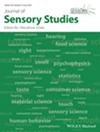Food losses and waste (FLW) is a global problem. Because household FLW is one of the biggest contributors to total FLW, strategies are being implemented to reduce per capita FLW in many countries. The present research contributed to this goal by investigating individual factors influencing self-reported household food waste in Australia. Using a web survey, data were obtained from 847 consumers. The average per capita food waste corresponded to 339 g/week and the median to 180 g/week. The most frequently wasted food categories were fresh vegetables and salads, fresh fruit, and bread. The percentage of participants reporting having disposed of these categories ranged between 45.9% and 65.9%. Although socio-demographic characteristics have been identified as relevant influencers of household food waste, the evidence is still inconclusive about the strength of their effects. Results from the present work identified significant effects of age and household size. For the former, the amount of per capita household food wasted tended to reduce with participants' age. Regarding the effect of household size, per capita food waste decreased with the number of people in the household. The present research also explored the effect of a series of psychological factors on the amount of food waste and five hypotheses derived based on the postulates of theories of consumer behavior were supported.
The association between the amount of food waste reported by participants and their intention to engage in food waste reduction behaviors and the positive effect of awareness on behavioral intention suggest the potential of communication campaigns to trigger behavioral change. Males and younger citizens should be targeted in such campaigns given their lower awareness compared with females and older citizens.



